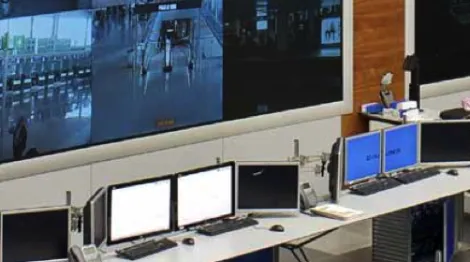Five Key Points to Improve Maintenance in a Chemical Plant
We present 5 key points to take the maintenance of your chemical facility or factory to the next level.


The chemical industry has for years been one of the leading sectors in industrial automation, where increasingly complex systems are coming together to greatly improve competitiveness. All of this is in an environment where safety and environmental regulations are among the most stringent.
Therein lies the value of turning maintenance into a differentiating advantage. Ensuring an optimal state of the facility and maximizing process time is estimated as a decisive value in a sector where margins tend to vary greatly and where value lies in the volume produced – especially in basic and secondary chemistry.
Below, we present 5 key points to take the maintenance of your chemical facility or factory to the next level:
1. A CMMS or APM that aligns with current needs and possibilities.
Maintenance software, responsible for planning work teams, installed assets, and stock, has been around for years. Its main function has been to coordinate what is necessary to carry out corrective and preventive maintenance actions.
However, there is now software that allows affordable predictive maintenance without the need to have Data Scientists on the team. This should allow anticipating errors in a way that has not been possible until now.
It should also be noted that, in the same way that a gradual fusion between IT and OT teams is being noticed these years, the same happens with the needs of operations and maintenance. The trend clearly indicates that they should be coordinated more and better than before, therefore, the CMMS or APM software must have the possibility of interacting in a simple way with the production software – SCADAs and planners -.
2. Knowledge of the most critical communications.
Today, due to the advantages they offer, the most critical communications are carried out with fieldbuses – where Profibus is still the most used –. Their properties continue to make them the most suitable communication method for this purpose, above Ethernet or wireless media.
However, these fieldbuses are significantly more difficult to supervise, monitor, and diagnose than a TCP/IP communication. Therefore, in the event of any failure, it will be necessary to have the tools to find where a problem has occurred or may occur.
3. Possibility of Fast Recovery.
When an instrument stops working, replacing it is sufficient. However, there are multiple essential elements that, in the event of a breakdown, a replacement is not enough.
For example, if a PLC breaks down, not only must another one be put in its place, but the latest version of its program must be installed on it. Managing this backup and version comparison requires specific tools, but the return and peace of mind they provide in the event of a possible failure is evident.

4. Possibility of local reporting.
Whether using the maintenance software mentioned above or using another specific tool, maintenance and operations need to have the ability to conduct studies of production areas and specific machines and instrumentation.
This near-field study is of great interest because high-level information can simply remain at that, a high level, when having the specific data in the field makes a difference. Similarly, those in charge closest to production can understand and contextualize the information since their work applies directly to it.
5. Training and technological support.
It is undeniable that digitalization is here to stay in the world of maintenance. This entails countless advantages, but also requires retraining of the classic work teams in charge of it.
Therefore, in the face of any type of improvement of the above, it is required not only to choose a technology, but also who you are going to work with. Today, it is considered unthinkable to choose a tool, however powerful it may be, where the provider does not also have a specific training program on the tool and technology, an advisory team, or personnel dedicated to providing support, in case there are problems or doubts once installed.
This last point is especially important in the chemical industry. As mentioned, the safety, traceability, and environmental regulations are especially rigorous in this sector, so any type of incident or problem must be resolved as quickly and rigorously as possible.
If you would like more information about our solutions focused on the chemical industry, do not hesitate to request more information.





